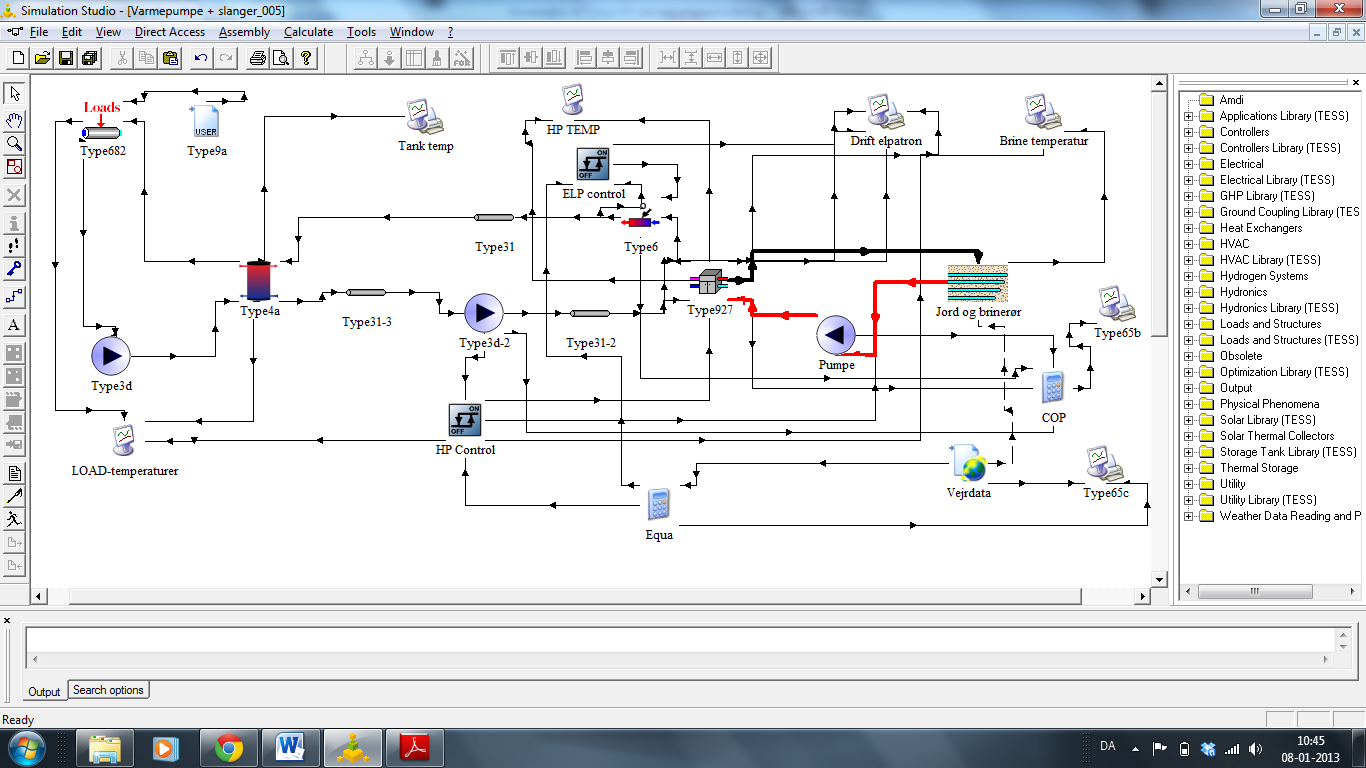

First, electric power can be generated on demand, irrespective of the process heat load profile, thus increasing the value of the power produced. Integrating thermal energy storage with conventional cogeneration equipment increases the initial cost of the combined system but, by decoupling electric power and process heat production, the system offers two significant advantages.

This report describes the results of a study of thermal energy storage (TES) systems integrated with combined-cycle gas turbine cogeneration systems. In related study of a chill TES system was evaluated for precooling gas turbine inlet air, which showed that an ice storage system could be used to effectively increase the peak generating capacity of gas turbines when operating in hot ambient conditions. However, certain advanced TES concepts and storage media could substantially improve the performance and economic benefits. The molten salt storage system was found to be less suitable for simple as well as combined-cycle cogeneration applications. The study reported here has shown more » that an oil/rock diurnal TES system, when integrated with a simple gas turbine cogeneration system, can produce on-peak power for $0.045 to $0.06 /kWh, while supplying a 24-hour process steam load. The UTES project has included a study of both heat storage and cool storage systems for different utility-scale applications. Several of these storage technologies can be used in a new or an existing power generation facility to increase its efficiency and promote the use of the TES technology within the utility and the industrial sectors. The program focuses on developing TES for daily cycling (diurnal storage), annual cycling (seasonal storage), and utility-scale applications. Department of Energy`s Thermal Energy Storage (TES) Program. The Pacific Northwest Laboratory (PNL) leads the U.S. Publication Date: Research Org.: Pacific Northwest Lab., Richland, WA (United States) Sponsoring Org.: USDOE, Washington, DC (United States) OSTI Identifier: 10109546 Report Number(s): PNL-10222 ON: DE95005751 TRN: 95:001071 DOE Contract Number: AC06-76RL01830 Resource Type: Technical Report Resource Relation: Other Information: PBD: Dec 1994 Country of Publication: United States Language: English Subject: 14 SOLAR ENERGY 99 GENERAL AND MISCELLANEOUS//MATHEMATICS, COMPUTING, AND INFORMATION SCIENCE ENERGY STORAGE SYSTEMS COMPARATIVE EVALUATIONS SEASONAL THERMAL ENERGY STORAGE OPTIMIZATION DUAL-PURPOSE POWER PLANTS COMPUTERIZED SIMULATION FEASIBILITY STUDIES COGENERATION GAS TURBINE POWER PLANTS SENSIBLE HEAT STORAGE ROCK BEDS MOLTEN SALTS 140704 142000 990200 TOTAL ENERGY AND HYBRID SYSTEMS HEAT STORAGE MATHEMATICS AND = , of Alaska, Fairbanks, AK (United States).

Pacific Northwest Lab., Richland, WA (United States).Further developments to the TRNSYS library of available models (economizer, evaporator, gas turbine, etc.) are recommended so that more » the phase-change processes is accurately treated. The one-tank stratified oil/rock storage model described here is a good starting point for parametric studies of a TES system. Results of the study clearly indicate that an engineering optimization of the TES system using TRNSYS is possible. The two TES systems selected for the base-case simulations were: (1) a one-tank storage model to represent the oil/rock TES system, and (2) a two-tank storage model to represent the molten nitrate salt TES system. TRNSYS is a transient simulation program with a sequential-modular structure developed at the Solar Energy Laboratory, University of Wisconsin-Madison. The objective of this study was to lay the ground work for optimization of the TES system designs using a simulation tool called TRNSYS (TRaNsient SYstem Simulation). The detailed engineering and economic feasibility of diurnal TES systems integrated with cogeneration systems has been described in two previous PNL reports. Integrating TES with cogeneration can serve the electrical and thermal loads independently while firing all fuel in the gas turbine. This report describes the results of a simulation of thermal energy storage (TES) integrated with a simple-cycle gas turbine cogeneration system.


 0 kommentar(er)
0 kommentar(er)
